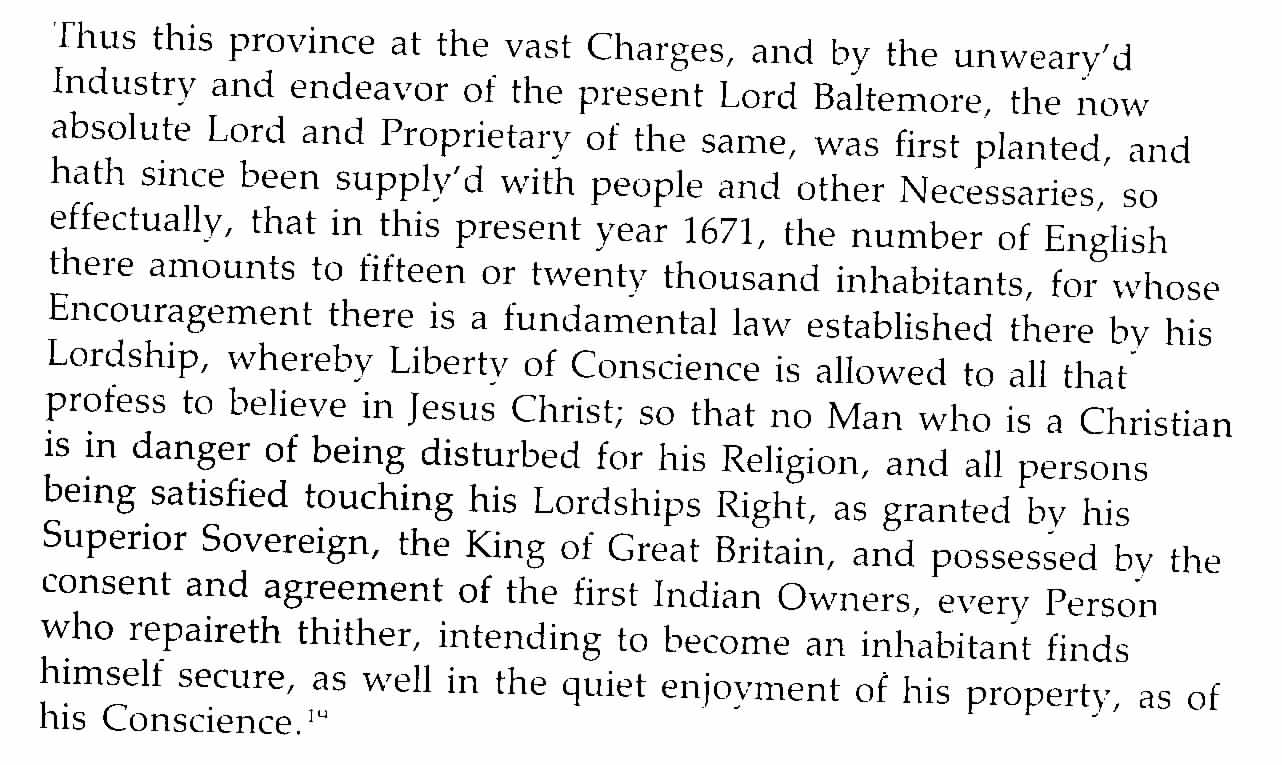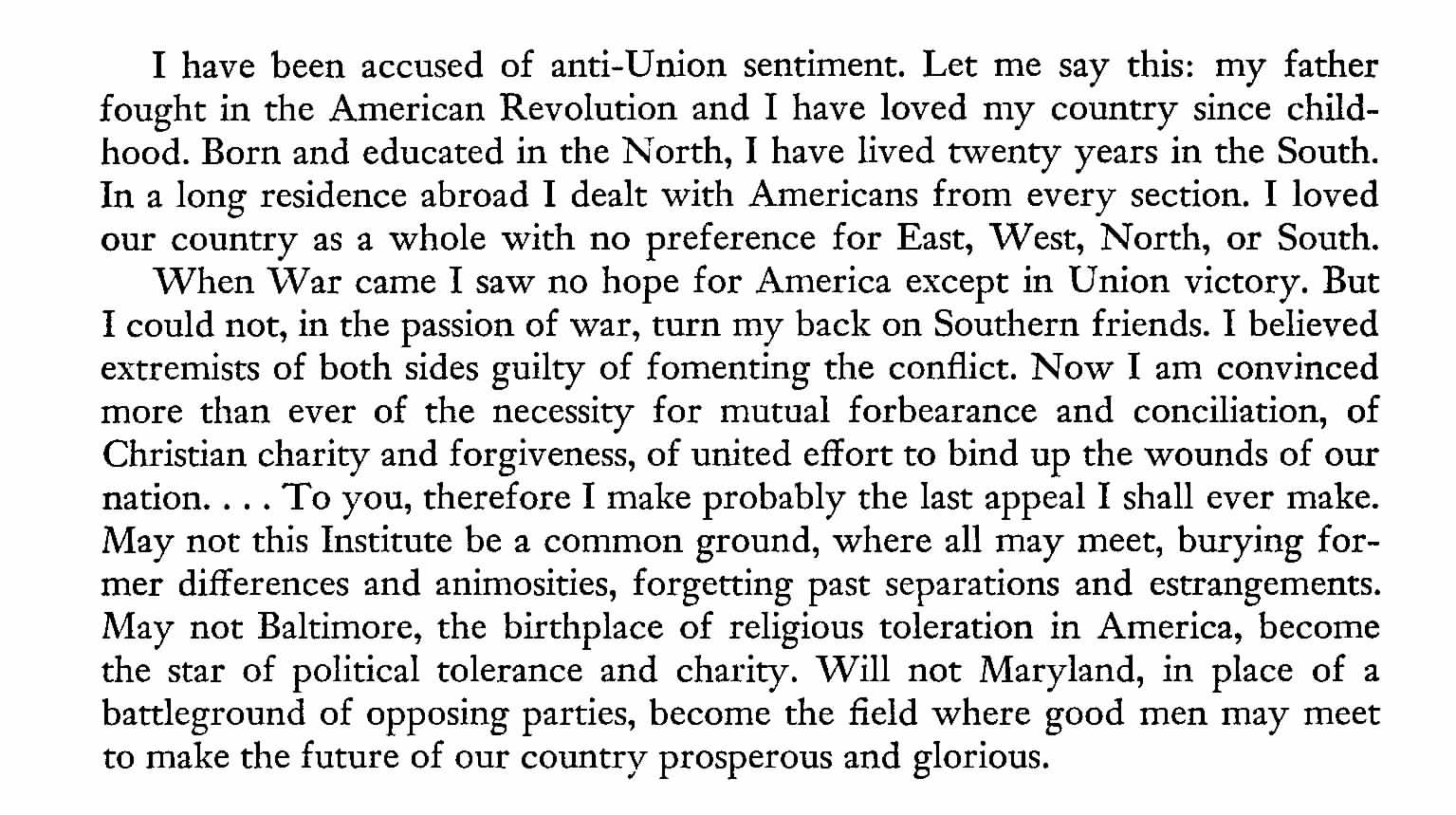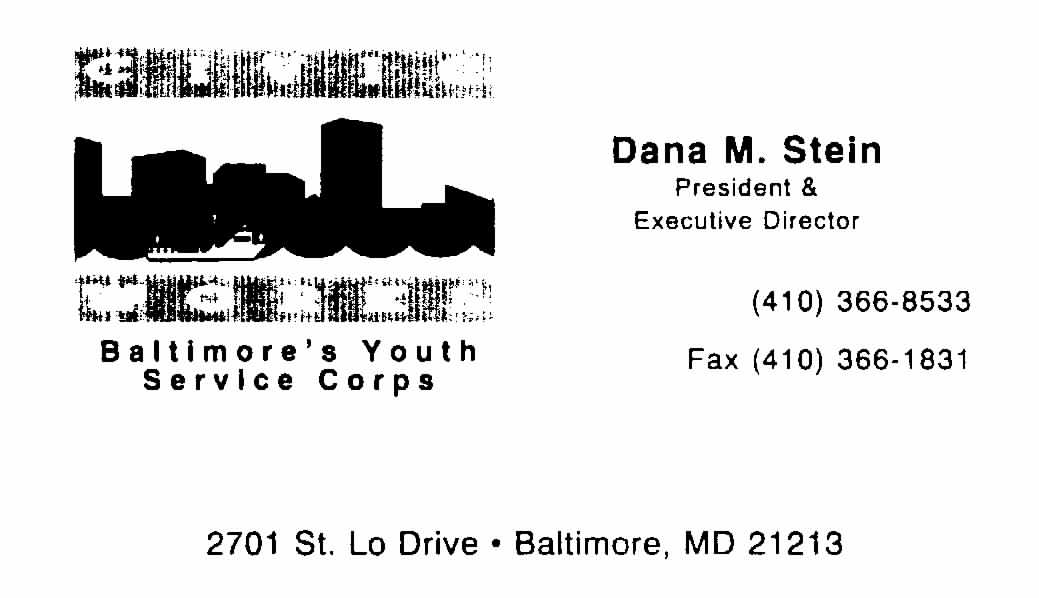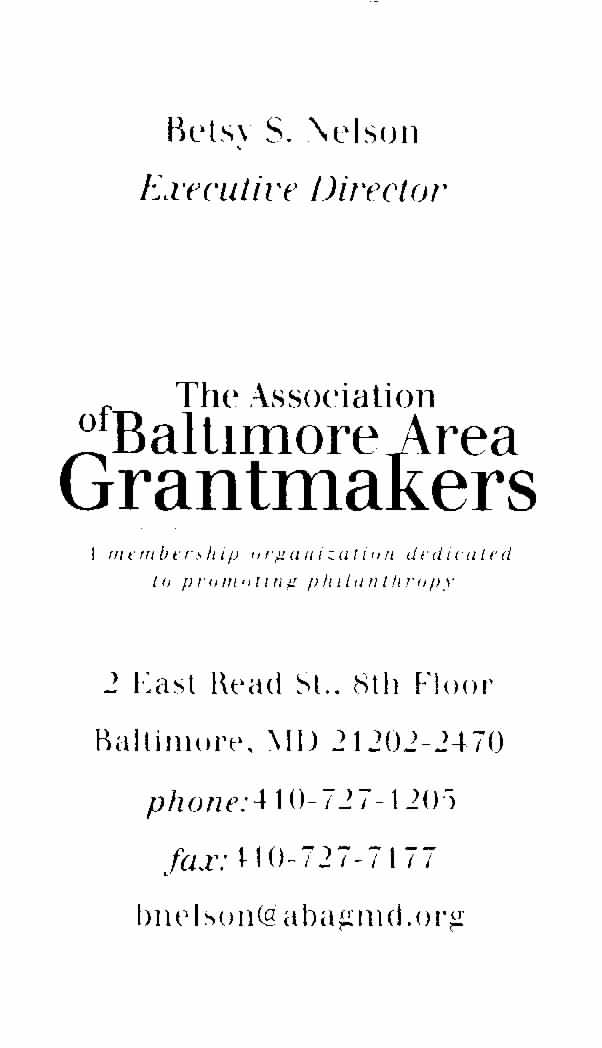
DATE: September 10, 2000
Database: 1100120
Subject: . Outline of remarks for Clifton Mansion exhibit opening,
Baltimore: Cradle of American Philanthropy 9/10/2000; 5 p.m. "Linking the
Past and the Present".
In his remarks, Dana Stein has set the theme for today's festivities:
Altruism can prevail.
With the Time Line and the thoughtfully designed and presented
exhibit, Sam Hopkins and the Exhibit Committee have done much of my work
for me this afternoon and have spared you from a long historical treatise
on philanthropy. I am also grateful to Rob Schoberlein of the
Archives staff who not only shared his expertise with the Exhibit Committee,
but also lent me the manuscript of his research on benevolent activities
in post-Civil War Baltimore which I hope he soon polishes for publication..
In many respects, Baltimore became the cradle of American Philanthropy
because of the vision of two men separated by nearly two hundred years,
Cecilius Calvert, 2nd Lord Baltimore, and George Peabody.
Each interpreted the public good as a joint venture between government
and the governed, with particular emphasis on the duties and responsibilities
of the wealthiest of the governed. Calvert staked his wealth
on the economic future of his colony and he called on wealthy investors
to join him, promising them land and religious freedom, and offering them
the opportunity to govern with him
By 1671 Cecil Calvert, in dynamic tension with the legislative body fostered under the Charter granted to him by King Charles I, had founded a colony in which the urge to 'do good to posterity' was premised on the public assuming responsiblity for the proper administration of legacies, the reclaiming of private lands for public purposes such as schools and public improvements, and the direct involvement of the government in fostering education and economic development. Calvert could read with considerable satisfaction the truth of the first printed history of Maryland published by John Ogilby that year.:
insert text:

John Ogilby, 1671. from Papenfuse & Coale, Hammond Harwood House
Atlas of Historical Maps of Maryland,
By the time of his death in November 1869, George Peabody had set examples of giving that would goad his friends and colleagues in Baltimore to become more generous in their benevolence than anywhere else in the United States. By 1893, as the exhibit points out, Baltimore ranked highest on the list of philanthropic giving with 49% of her population of millionaires joining the ranks of donors to good causes.
It is well known that he gave Baltimore the Peabody Institute, intended to help heal the wounds of a bloody civil war and foster enlightened concensus:
insert text:

from Franklin Parker's George Peabody, 1971, p. 158, ca. Oct 15, 1866 opening of the Peabody
It is probably less well known that George Peabody was the catalyst that persuaded Johns Hopkins to use his fortune to endow a university and teaching hospital. After the following advice from Peabody, Hopkins immediately made out his will and the rest is history.::
insert text:

Peabody to Johns Hopkins as quoted by Franklin Parker, p. 166; ca. April
1867 as reported by J. W. Garrett in 1883;
It is probably even less well known that without the initiative of George Peabody, it is highly unlikely that there would be a State Archives as we know it today. At the urging of John Henry Alexander (the State paid Engineer famed for his mapping of sites for publicly funded canals and roads) Peabody financed the inventorying and copying of eleven volumes of original records relating to Maryland in English archives, which he gave to the Maryland Historical Society. He also gave the society what was meant as a permanent publication fund of $20,000, which resulted in the publication of some 10 volumes of still significant historical studies and helped inspire the State to finance the prestigious Archives of Maryland series, a series still being published on the web by the State Archives today.
Through the Peabody Institute he fostered the creation of a magnificient
library, now adminstered by the Johns Hopkins University, and a wonderful
art collection, now, thanks to Lt. Governor Towsend and her predecessor
Lt. Governor Steinberg, owned by the State and adminstered by the State
Archives. Indeed you all are invited to an exhibit of the Treasures
of the Peabody that will open next January in the new Miller Senate Office
Building in Annapolis.
George Peabody was first and foremost interested in education in all
forms. There is, in fact, a direct link between George Peabody's
vision of learning and the goal of Civicworks to reach out to the poorest
and the most under privileged in our society, to teach them to read and
to appreciate the culture of which they are a part.
George Peabody's approach to giving, along with all those featured in
this exhibit who were influenced by him, deserves closer scrutiny in today's
world. In many ways how he approached the business of giving was
both far sighted and a cautionary tale.
What made Peabody different from most of his contemporaries was that
he gave while living and he did so in ways that he hoped would perpetually
address the objectives of his gifts. It was an approach to giving
from which Andrew Carnegie drew inspiration for the countless endowments
that his even large fortune permitted.
Simply put, while he gave money for buildings and books, he also gave
endowments for maintenance and acquisition, allowing the wisdom of the
trustees and the economic fortunes of the nation to dictate the degree
to which the endowments would prosper.
The cautionary tale, lies in the history of a number of the endowments
that Peabody launched. Too often the Trustees did not manage them
well, or the objectives of the founder were lost sight of. The Peabody
Fund publications are no more, and without the considerable help of
Johns Hopkins University and the State the Peabody Institute would have
suffered a similar fate.
The key to effective benevolence is the creation of endowed educational
activities that persistently sets aside a significant portion of
any money raised (including tax revenue) for investment in
bonds and stocks, managed carefully by respected trustees for the future
benefit of the objectives of the fund. It is a principal that perhaps
ought to be extended to the functions of State Government, especially those
entrusted with education and keeping alive the collective memory of our
past as it exists in our historical records and such magnificent structures
as this architectural monument to Johns Hopkins.
I promised Sam that I would be brief this afternoon. Permit me to close by encouraging you to read the exhibit carefully and reflect on the obligation of all of usl, through giving, volunteering, and simply being good citizens, to ensure that the future of our children includes the ability to read and learn with us, about what is worth knowing and appreciating about our past.
To return to Dana Stein's opening remarks: Altruism can prevail,
if we lead well
if we teach well
if we learn well
Thank you.

